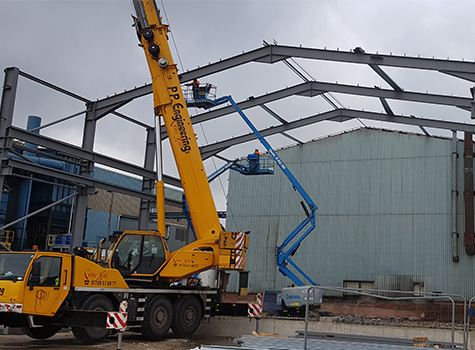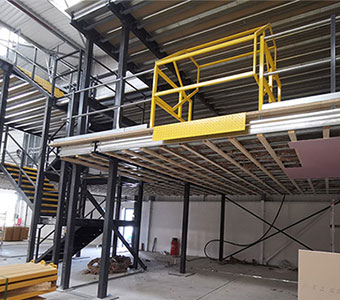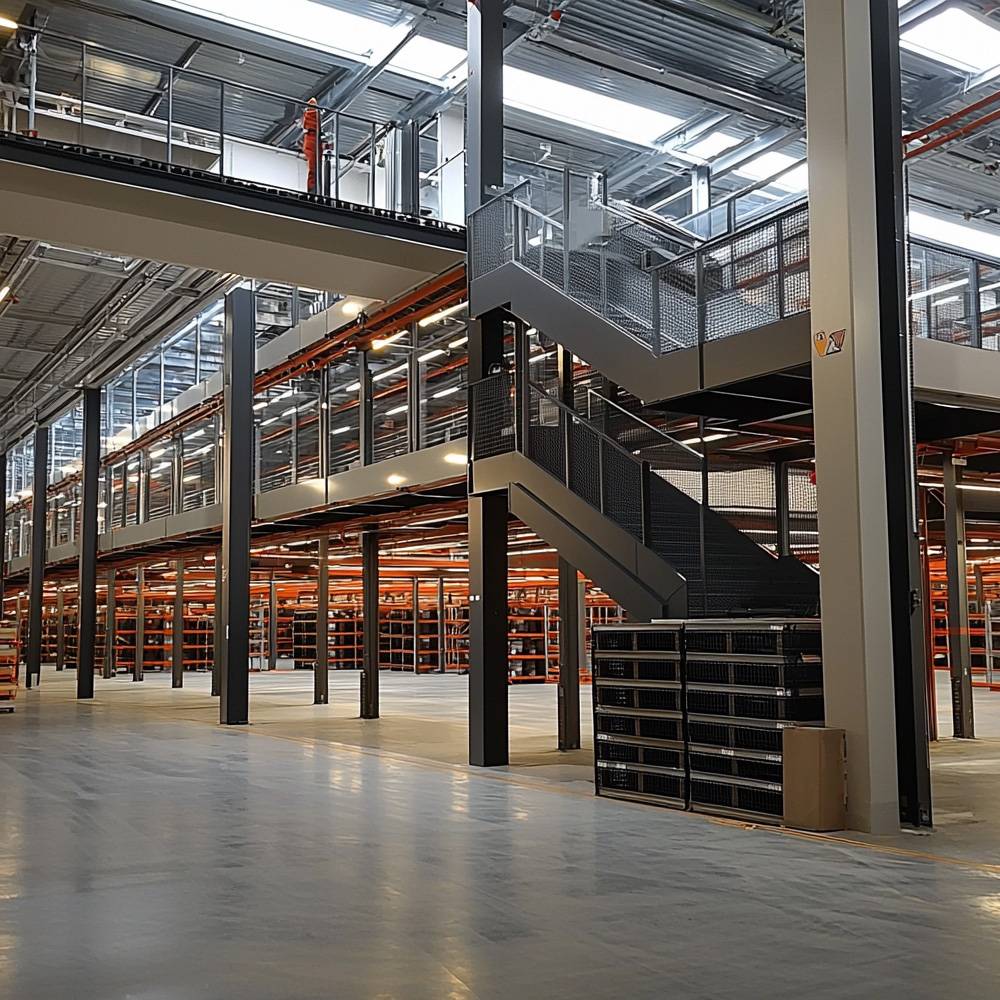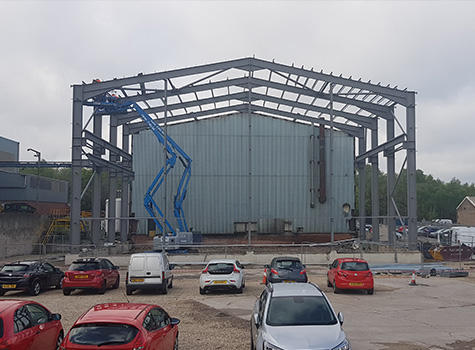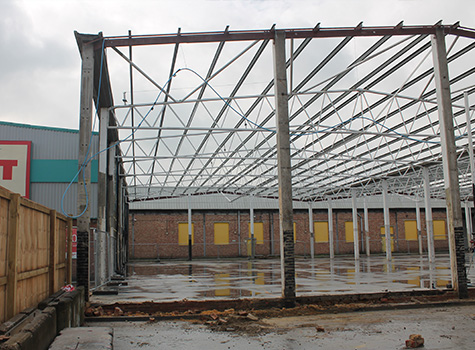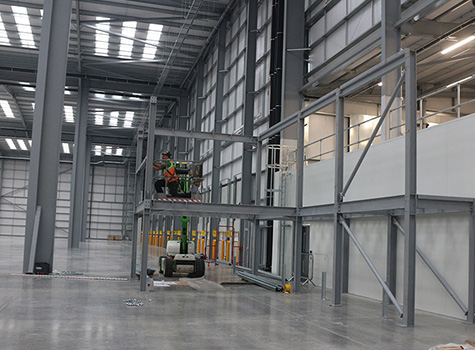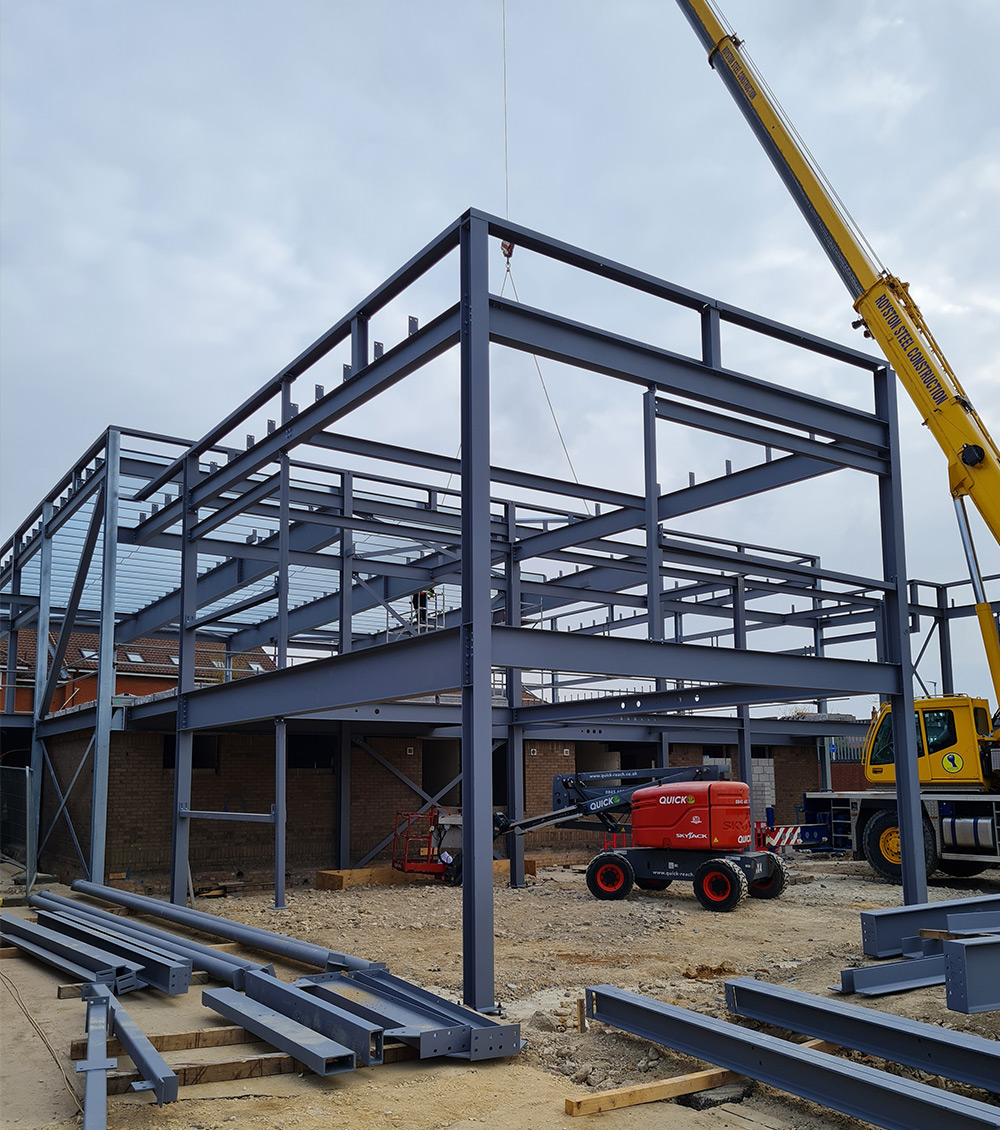Experts in Structural Steel
We are experts in structural steel, built on decades of knowledge and large project experience.
Steelgram is fully accredited, fully insured, and capable of handling your project from the design phase right through to installation.
Whether your project is commercial, education, retail, or industry, we can help you.
Contact us today for a quote.

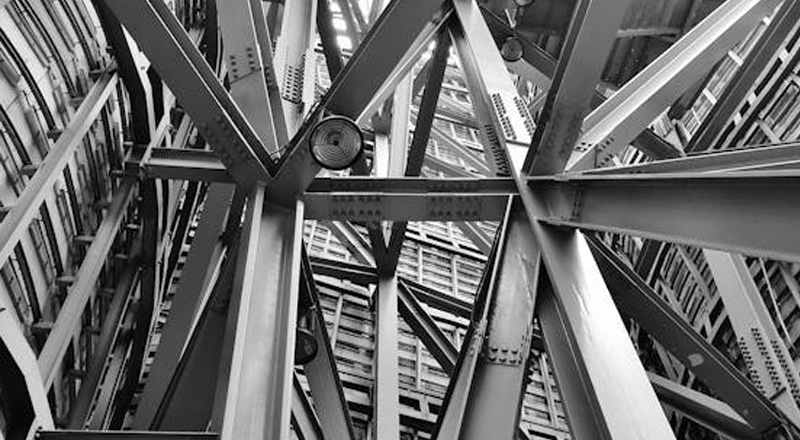
Get A Quote
Every project is designed from scratch to your specific needs, so click the button below to fill out our quick quote form now:
TRUSTED BY

Benefits of Strong Steel in Construction Projects
- High Strength-to-Weight Ratio
Supports long spans and heavy loads without overengineering. Ideal for floor beams, portal frames, and cantilevers. - Speedy Installation with Prefabrication
Pre-cut, pre-drilled steel reduces site labour, noise, and error. Faster assembly = fewer crane days and tighter schedules. - Consistent Quality, Predictable Performance
CE-marked and BS EN 10025-compliant steel behaves exactly how your structural model says it should. No surprises. - Versatile Section Profiles
Choose from UB, UC, RHS, SHS, CHS, angle, or plate – each profile tailored to specific structural, aesthetic, or loading needs. - Easy to Modify or Extend Later
Need to make design changes mid-project or future-proof a structure? Steel’s modular nature gives you flexibility. - Durability and Long Life
Hot-dip galvanised or primed steel can withstand decades of weather, damp, and wear – perfect for exposed frames or industrial sites. - Fire and Pest Resistant
Non-combustible and immune to termites, fungi, or rodents. No treatments needed. It just works. - Recyclable and Sustainable
Over 90% of structural steel is recycled in the UK. Earn BREEAM points and keep environmental consultants happy. - Tight Dimensional Control
Fabricated to fine tolerances. When every mm matters (especially on tight sites), steel gives you certainty. - Compatible with BIM and Digital Workflows
Integrates cleanly into CAD/BIM systems, clash-detection workflows, and 3D site modelling. - Trade Account Benefits (When Supplied Right)
Bulk pricing, job tracking, stock ringfencing, and staged delivery. Makes your project smoother from quote to install.
Let’s be honest… You’re on site, wind slapping dust in your face, and now you’re trying to explain to the client why the steel hasn’t landed (again).
You’re nervously checking your phone for the fifth time, the brickies are already packing up, and someone’s using an offcut as a bench. It really shouldn’t be like this.
Your materials should arrive cut, certified, ready to lift, and bang on time – like clockwork, prefabricated to perfection. Turns out, the right supplier can do exactly that (and yes, we mean us).
Still Deciding Between S275 or S355? Here’s How We Help You Get It Right
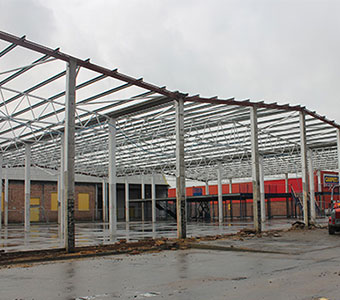
You’re staring at the spec sheet. You know you need structural steel – but now comes the fork in the road: S275 or S355?
One’s cheaper. The other’s tougher.
And all you want is to get the job done without some clever-sounding choice turning into a six-week headache. Sound familiar?
At Steelgram Fabrications, we’ve delivered steel to retail units in Doncaster, distribution centres in Sheffield, and reinforced sports halls in Hull – places where margins matter and mistakes echo. We’ve watched how the wrong steel grade doesn’t just mess with your numbers – it starts a slow drip of consequences: rework orders, awkward site conversations, and “Why’s that beam sagging?” calls three weeks later.
Let’s get into the guts of it.
- S275? It’s the dependable all-rounder. A bit like a trusty Ford Transit – 275 N/mm² (MPa) yield strength, tensile between 410-560 MPa. Mild, compliant, easily drilled. You’ll get no surprises with it… unless you push it too far.
- S355? Now you’re talking reinforced frame performance. Like swapping to a Hilux – beefier yield at 355 N/mm², tensile up to 630 MPa, more flex in load-critical situations. That 29% increase in strength can shrink your beam sizes, reduce deflection, and stop your floor bouncing under footfall.
Picture a mezzanine where the spec called for S275 and 254x146x31 UB. Swap it to S355 and drop to 203x133x25 UB – lighter lifts, same performance. Saves them £2.4k in steel weight, fixings, and install time. All while keeping the SE and QS both happy. Magic? No. Just maths and experience.
Here’s the million-pound question:
Are you dealing with long spans, moving loads, or structural safety? Go S355.
Just handling infill or partition support? S275 might do just fine.
Need help figuring it out? We’ll liaise with your SE, run the numbers, show you where you can trim the fat – or where you shouldn’t.
Learn more about steel grades here.
Learn what is structural steel here.
Is Custom-Cut Steel Worth It? Let’s Talk About What It Saves You On-Site
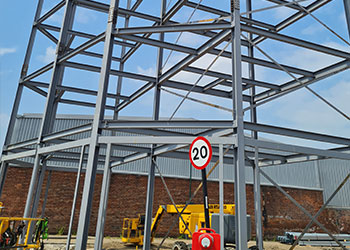
Let’s paint the scene: It’s raining. The sparks are flying. The saw’s gummed up. There’s a queue of beams waiting for trimming, the tape measure’s been “borrowed,” and someone’s managed to cut three lengths short by 12mm.
Sound like a Thursday?
Instead you should cut to ±2mm tolerance, across lengths from 0.5m to 13m. That means your steel lands ready to install, with zero on-site friction, sparks, or snags.
Standard lengths like 6.1m or 12.2m might look cheaper, but what you’re really buying is… offcuts. Waste. Risk.
And let’s be honest: how many cuts per day before your labour cost outweighs the per-tonne saving?
How to manage a project: pre-cut and pre-drill 100x100x5 RHS for 42 gantry frames. Solution? Bundle each delivery by bay, colour-code the parts, and etch part IDs. A four-man crew installs 22 frames in one shift. They call it “the cleanest day we’ve had in months.” That’s service.
Want even tighter control? Send us your DXFs. We’ll highlight collision points, re-sequence deliveries by install phase, and laser-mark each piece to match your GA.
Here’s a quick mental model:
Would you rather unpack IKEA furniture fully assembled? Of course.
Why should your steelwork be any different?
Every minute not spent cutting is one spent building. That’s the only metric that matters.
Paying More for Faster Delivery? Here’s When It’s Actually the Cheaper Option

Price-per-tonne doesn’t matter when your crew’s sitting around drinking tea because the beams haven’t landed. You know it. We know it. Still, suppliers keep pretending like being “cheapest” on paper counts for something.
At Steelgram, our delivery isn’t guesswork. It’s schedule-integrated. Staggered drops. Live driver updates. We don’t leave you chasing missed slots – we help you plan around them. Because this isn’t just steel logistics – it’s Gantt-chart surgery.
- HIAB offload with 7.5m reach? No problem.
- Need a Sunday AM drop in a school zone? Done it before. Do it often.
You’re not buying delivery. You’re buying momentum.
Confused Between SHS, RHS, and CHS? Here’s How We Break It Down With You
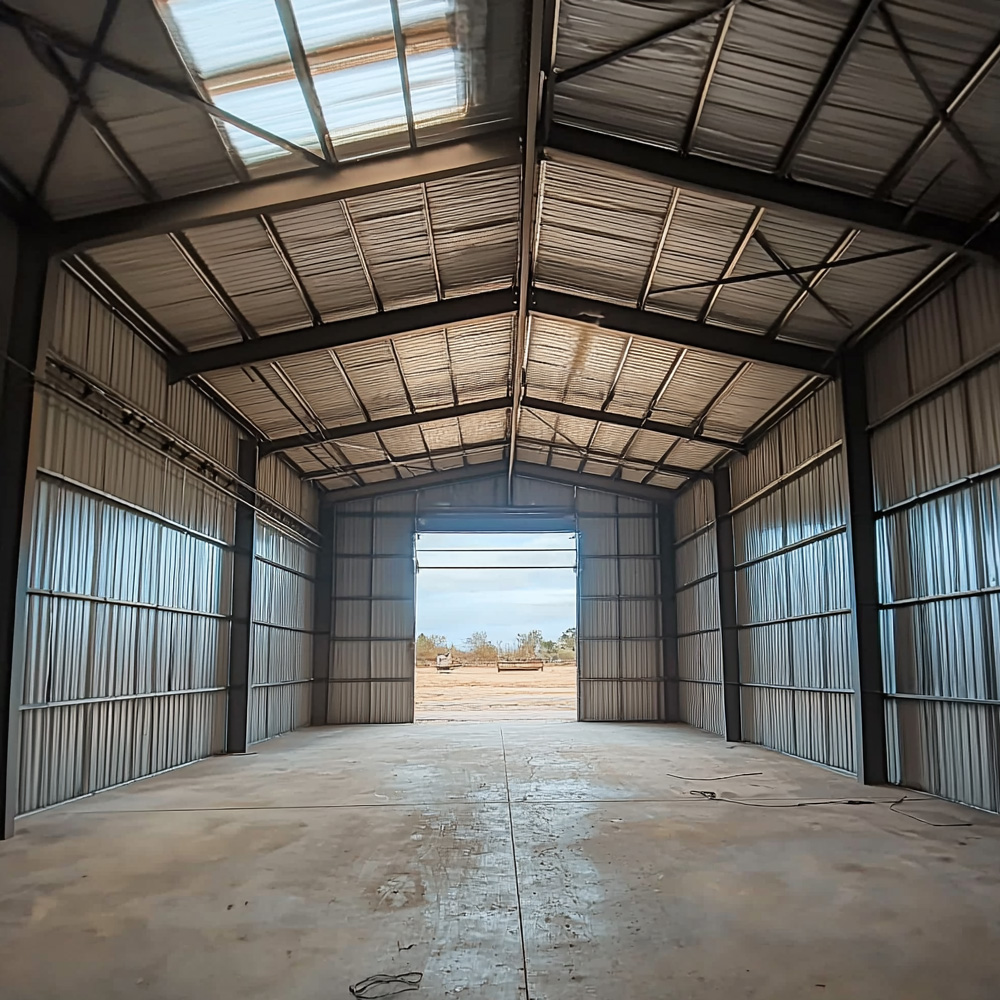
Most people pick hollow sections like they pick ketchup – whichever they’ve used before. But here’s the thing: when your structural geometry, wind loads, and aesthetic finish all depend on that profile… “habit” starts getting expensive.
Let’s break it down like Jeremy Clarkson explaining torque.
- RHS (Rectangular Hollow Section): Think of it as your directional load king. Great for spans. A 200x100x6.3mm RHS laughs at vertical load, especially over 4.5m+ beams. Perfect for canopy beams, shelf frames, anything with major-axis support.
- SHS (Square Hollow Section): Symmetrical, clean, consistent in compression. 120x120x6.3mm SHS is a go-to for columns and bracing where equal performance in both axes matters. Want your curtain wall mullions dead straight? Start here.
- CHS (Circular Hollow Section): Smooth, sleek, strong in twist. 139.7x5mm CHS doesn’t just perform – it performs beautifully. Also reduces vortex shedding – yes, that’s the aerodynamic wiggle that sends scaffolders cursing in coastal winds.
Wondering which to pick?
We’ll give you deflection values, L/r ratios, and load tables for each. Better yet, we’ll show you what they’ll look like after 10 years of sun, rain, and pigeon droppings.
Choose the right shape and your steel won’t just support the job – it’ll elevate the build.
Thinking of Skipping Galvanised Steel? Let’s Talk Long-Term Cost
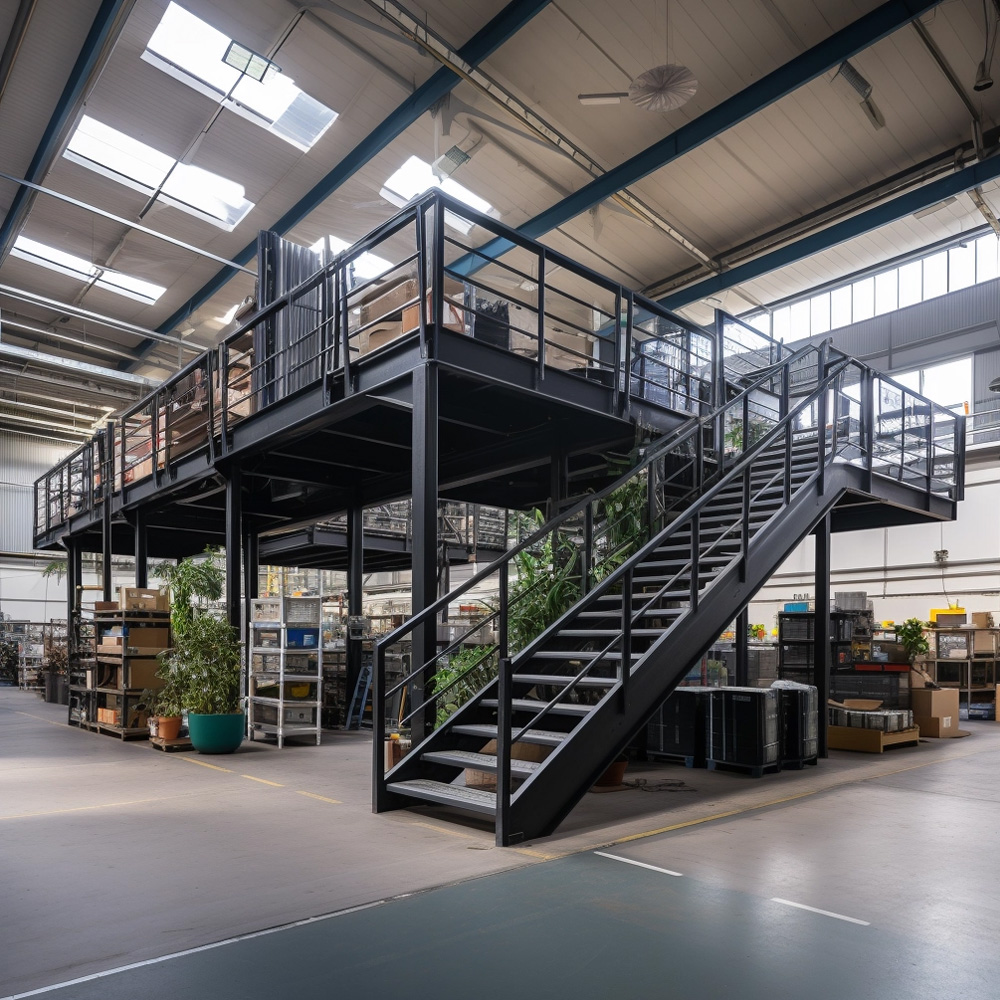
“We’ll paint it on site.”
Ah, the five most expensive words in steel protection.
Uncoated steel doesn’t just rust – it’s a creeping liability. First a patch. Then a peel. Then water tracks behind a fixing and you’re grinding back with a headtorch in six months. Sound familiar?
Here’s what you want instead:
- Hot-Dip Galvanising to BS EN ISO 1461, avg. 85µm coating, good for 20–40 years outdoors
- Zinc-rich epoxy primer, 60–100µm DFT
- Galv + primed finish, ready for site paint-on later
- Need something niche?
- We’ll guide you on drainage hole positions for hollow galv.
- Want to paint over galv? We’ll recommend compatible topcoats and curing times.
- Cut something on site? We’ll include zinc-rich patch kits – just spray and cure.
Paint can flake. Galv doesn’t blink. You decide.

